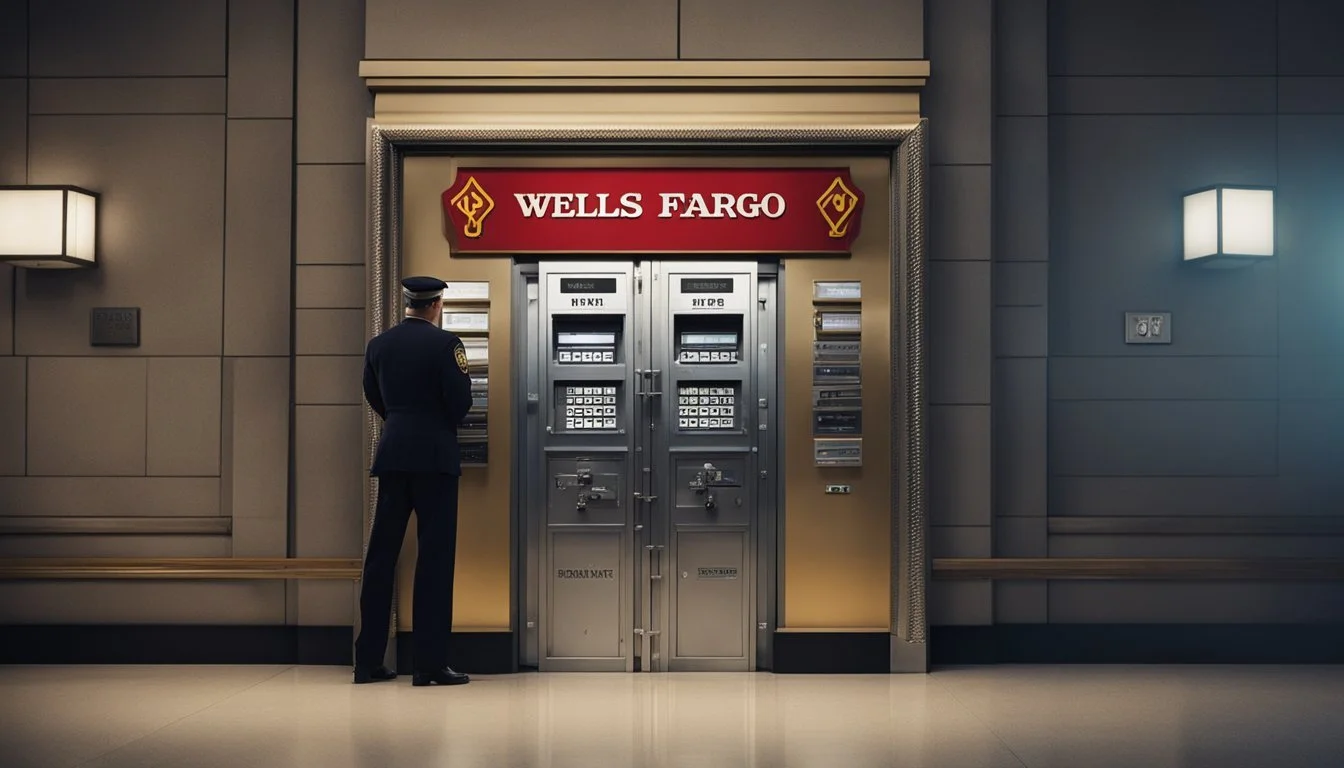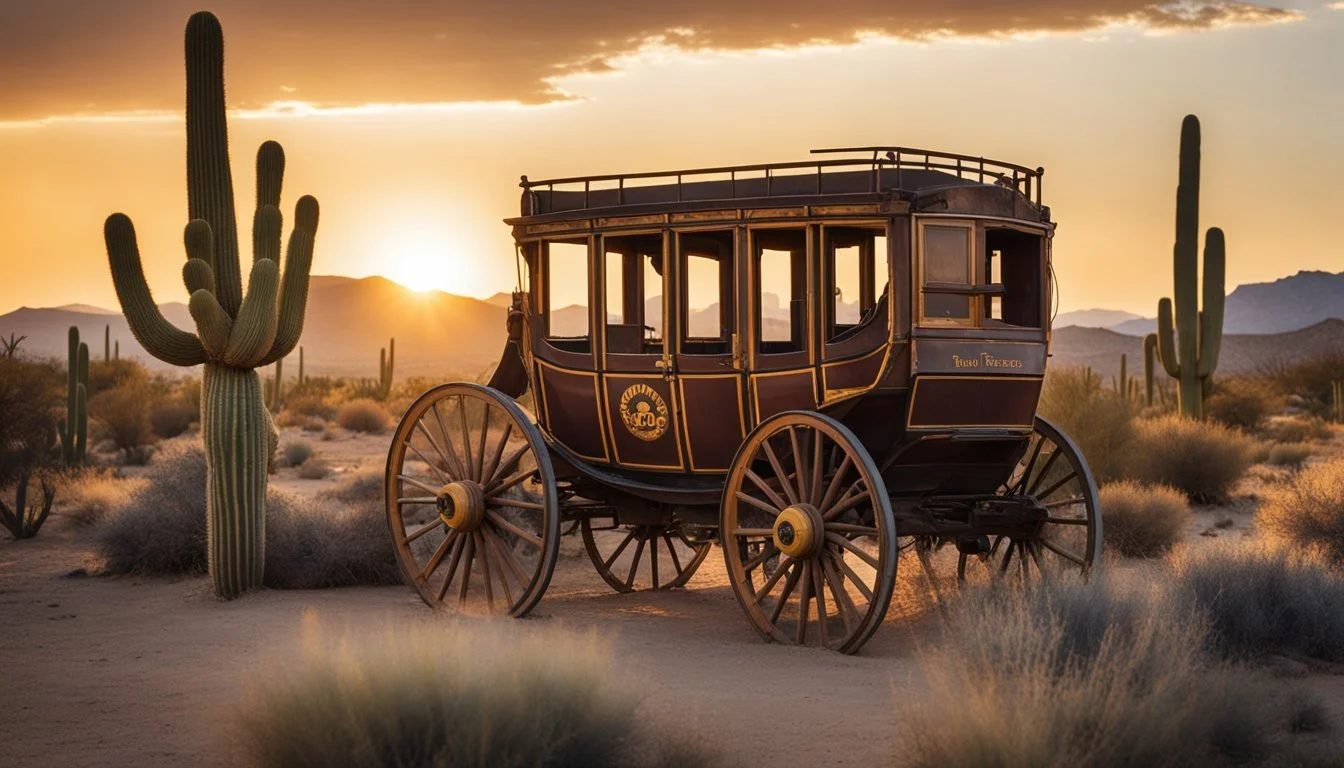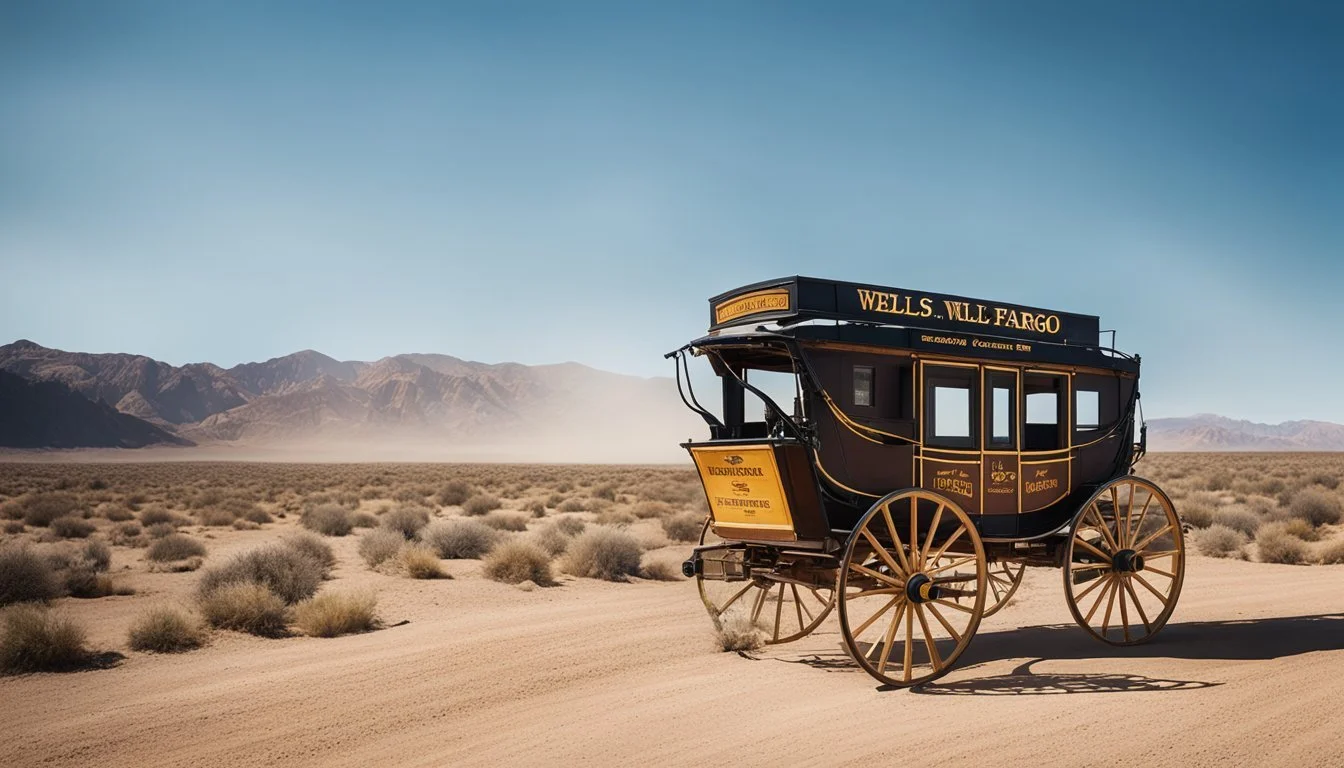3 Revealing Documentaries on Bob Paul's Wells Fargo Days
Uncovering the Wild West's Most Daring Stagecoach Guard
Bob Paul's tenure at Wells Fargo during the Wild West era was marked by adventure, danger, and notable accomplishments. As a stagecoach driver and later a lawman, Paul played a significant role in shaping the company's history and reputation in the frontier days.
Three revealing documentaries offer viewers a fascinating glimpse into Paul's experiences and the challenges faced by Wells Fargo during this tumultuous period. These films explore Paul's encounters with outlaws, his efforts to protect valuable cargo, and his contributions to law enforcement in the American West.
1) "Chasing Bad Men" by Mark Dugan (2018)
"Chasing Bad Men" offers a gripping exploration of Bob Paul's time as a Wells Fargo detective in the Old West. Director Mark Dugan meticulously reconstructs Paul's pursuit of notorious outlaws during the late 19th century.
The documentary showcases Paul's tenacity and skill in tracking down criminals who targeted stagecoaches and trains. Through interviews with historians and reenactments, viewers gain insight into the challenges faced by lawmen of that era.
Dugan's film highlights several of Paul's most famous cases, including his pursuit of the Sontag-Evans gang. It also examines the evolving techniques used by Wells Fargo to protect its shipments and deter robbers.
"Chasing Bad Men" paints a vivid picture of the dangers and excitement of frontier law enforcement. The documentary effectively captures the spirit of adventure that drew men like Bob Paul to this dangerous profession.
More information on "Chasing Bad Men" (IMDB)
2) "The Wells Fargo Story" by Walter A. Meissner (1963)
Walter A. Meissner's documentary "The Wells Fargo Story" offers a comprehensive look at the history of Wells Fargo & Company. The film traces the company's origins from its founding in 1852 through its growth and development in the American West.
Meissner's work highlights the crucial role Wells Fargo played in connecting frontier communities. It explores how the company's stagecoaches and express services facilitated communication and commerce across vast distances.
The documentary features archival footage and photographs that bring the era to life. It showcases the challenges faced by Wells Fargo employees, including encounters with bandits and harsh weather conditions.
Meissner's film also examines the company's evolution as technology advanced. It details Wells Fargo's transition from stagecoaches to railroads and eventually to modern banking services.
"The Wells Fargo Story" provides insight into the company's impact on American economic development. It illustrates how Wells Fargo's services supported the growth of businesses and communities in the expanding nation.
More information on "The Wells Fargo Story" documentary
3) "Wells Fargo: The Untold Stories" by Gene Klade (2018)
Gene Klade's documentary sheds light on lesser-known aspects of Wells Fargo's history. The film explores Bob Paul's tenure at the company during the late 19th century.
Klade interviews historians and examines archival materials to piece together Paul's experiences. The documentary highlights Paul's role in protecting stagecoaches and tracking down bandits.
Viewers gain insight into the challenges faced by Wells Fargo employees during the Wild West era. The film depicts dangerous encounters with outlaws and harsh traveling conditions.
"Wells Fargo: The Untold Stories" also touches on Paul's later career as a lawman. It examines how his time at Wells Fargo influenced his approach to law enforcement.
Klade's work provides a nuanced look at the intersection of business and frontier justice. The documentary offers a fresh perspective on a pivotal period in American history.
More information on "Wells Fargo: The Untold Stories" (IMDB)
Bob Paul's Role at Wells Fargo
Bob Paul played a crucial role in Wells Fargo's operations during the late 19th century. His career spanned several decades and involved notable accomplishments in security and transportation.
Career Beginnings
Bob Paul joined Wells Fargo in the 1870s as a stagecoach driver. He quickly earned a reputation for reliability and bravery on dangerous routes through the American Southwest.
Paul's skill in handling horses and navigating treacherous terrain caught the attention of company executives. Within a few years, he was promoted to the position of shotgun messenger, responsible for protecting valuable cargo.
His dedication and quick thinking during attempted robberies made him a valuable asset to Wells Fargo. Paul's early experiences laid the foundation for his future success with the company.
Significant Achievements
As Paul rose through the ranks at Wells Fargo, he made several important contributions to the company's security measures. He developed new protocols for protecting stagecoaches and trains carrying valuable shipments.
Paul's most notable achievement was his role in capturing the infamous Benson stage robbers in 1881. His strategic planning and coordination with law enforcement led to the successful apprehension of the criminals.
Wells Fargo recognized Paul's efforts by promoting him to the position of special agent. In this role, he oversaw security operations across a wide territory and trained new employees in best practices for safeguarding company assets.
Historical Context
The American West of the mid-to-late 1800s was a tumultuous period marked by rapid expansion, economic growth, and lawlessness. This era saw the rise of stagecoach companies like Wells Fargo and the challenges faced by lawmen in maintaining order on the frontier.
Wells Fargo in the 1800s
Wells Fargo & Company was founded in 1852 during the California Gold Rush. The company quickly expanded its services, offering banking, express delivery, and stagecoach transportation across the growing nation.
Wells Fargo's iconic stagecoaches became a symbol of westward expansion and economic progress. These coaches traversed dangerous territories, carrying valuable cargo, mail, and passengers.
The company played a crucial role in connecting isolated frontier towns to larger cities and financial centers. Wells Fargo agents often acted as de facto bankers in remote areas, providing essential financial services to settlers and businessmen.
Law Enforcement Challenges
Lawmen in the Old West faced numerous obstacles in maintaining order. Vast, sparsely populated territories made it difficult to patrol effectively and respond quickly to crimes.
Outlaws and bandits frequently targeted stagecoaches, banks, and trains. These criminals exploited the rugged terrain and lack of communication to evade capture.
Many Western towns struggled with inadequate resources and manpower to combat crime. Sheriffs and deputies often found themselves outgunned and outnumbered by organized gangs.
Corruption was also a significant issue, with some lawmen accepting bribes or turning a blind eye to illegal activities. This further complicated efforts to establish law and order in frontier communities.
Impact on Popular Culture
Bob Paul's time at Wells Fargo left an indelible mark on American culture. His exploits and character have been immortalized in various forms of media, shaping public perceptions of the Old West era.
Depictions in Media
Bob Paul's Wells Fargo adventures have been featured in numerous Western films and TV shows. The 1957 movie "The Tall T" loosely based its protagonist on Paul, highlighting his bravery and quick thinking.
Several documentaries have explored Paul's career, including "Wells Fargo: Guarding the Frontier" (1998) and "Lawmen of the Old West" (2005). These films emphasize his role in maintaining order during tumultuous times.
Books like "Deadly Dozen: Twelve Forgotten Gunfighters of the Old West" by Robert K. DeArment have dedicated chapters to Paul's exploits, ensuring his place in Western literature.
Legacy of Bob Paul
Bob Paul's impact extends beyond entertainment, influencing perceptions of Wells Fargo and frontier law enforcement. His dedication to duty became a symbol of the company's reliability and integrity.
Many historical reenactments and Wild West shows incorporate elements of Paul's experiences, bringing his story to life for modern audiences. These performances often highlight his famous shootouts and daring stagecoach rescues.
Paul's legacy has inspired naming conventions in some Western-themed attractions. For example, a popular saloon in Tombstone, Arizona, bears his name, attracting tourists interested in Old West history.
His methods of securing valuables and protecting stagecoaches have been studied by security professionals, demonstrating the enduring relevance of his innovative approaches to safeguarding assets.







